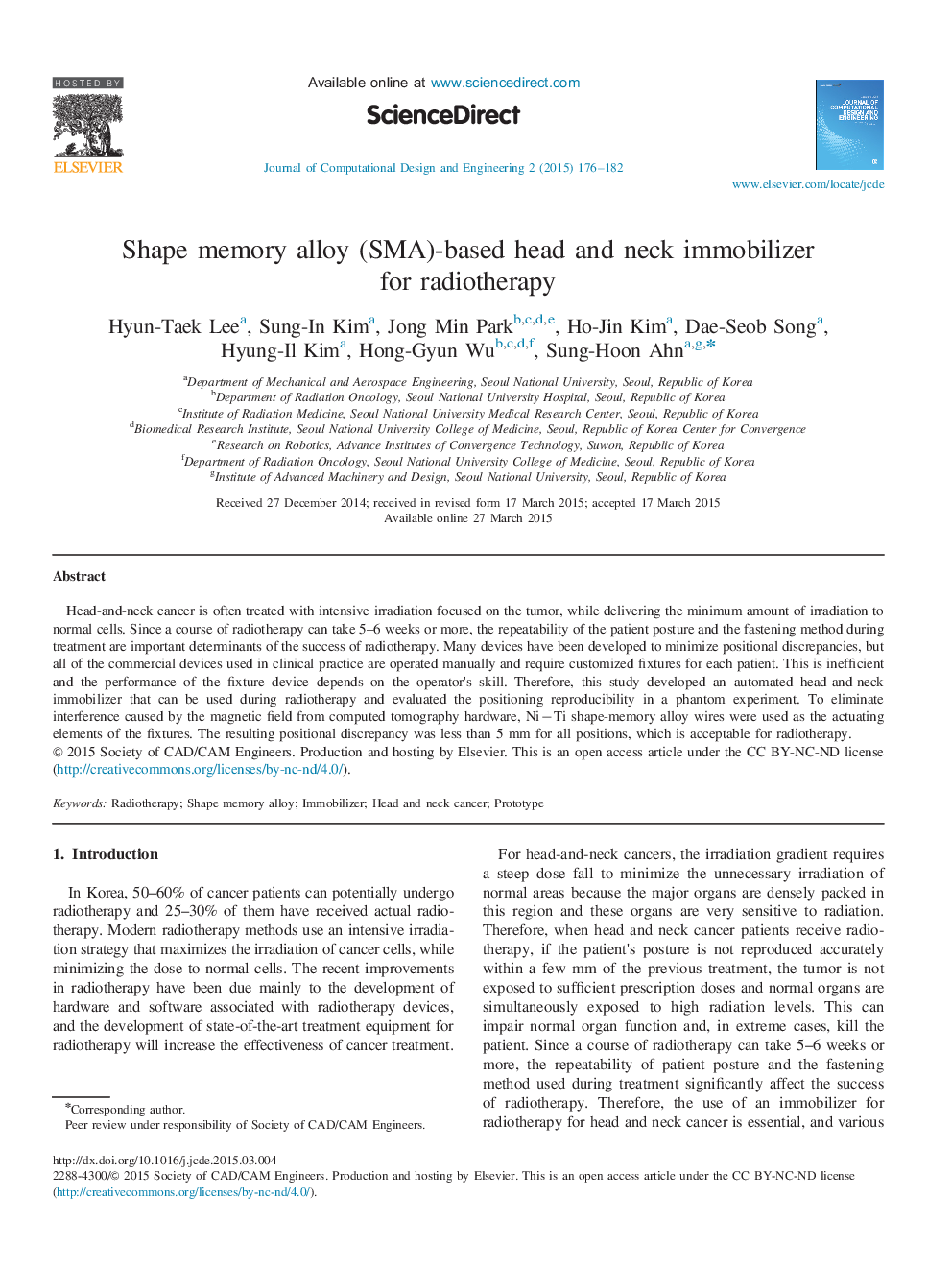| Article ID | Journal | Published Year | Pages | File Type |
|---|---|---|---|---|
| 442833 | Journal of Computational Design and Engineering | 2015 | 7 Pages |
•Prototype of automated head and neck immobilizer for radiotherapy was developed.•Ni−Ti shape memory alloy wires were used as the actuating elements of the fixtures.•Posture reproducibility was evaluated by measuring geometrical discrepancies of CT images.
Head-and-neck cancer is often treated with intensive irradiation focused on the tumor, while delivering the minimum amount of irradiation to normal cells. Since a course of radiotherapy can take 5–6 weeks or more, the repeatability of the patient posture and the fastening method during treatment are important determinants of the success of radiotherapy. Many devices have been developed to minimize positional discrepancies, but all of the commercial devices used in clinical practice are operated manually and require customized fixtures for each patient. This is inefficient and the performance of the fixture device depends on the operator׳s skill. Therefore, this study developed an automated head-and-neck immobilizer that can be used during radiotherapy and evaluated the positioning reproducibility in a phantom experiment. To eliminate interference caused by the magnetic field from computed tomography hardware, Ni−Ti shape-memory alloy wires were used as the actuating elements of the fixtures. The resulting positional discrepancy was less than 5 mm for all positions, which is acceptable for radiotherapy.
